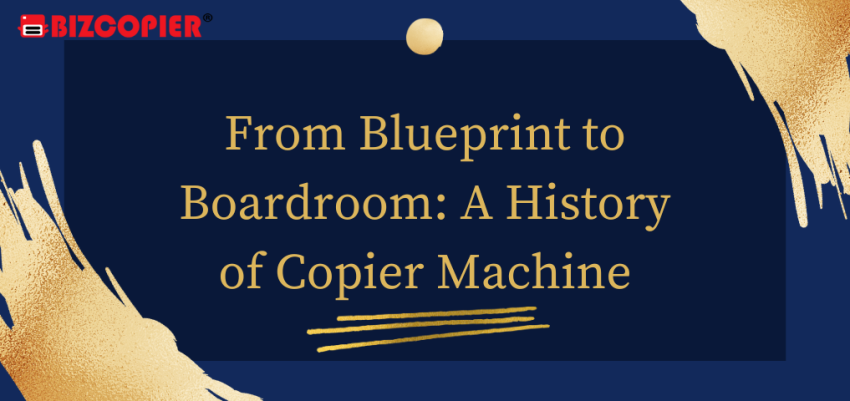From Blueprint to Boardroom: A History of the Copier Machine
The ubiquitous copier machine, humming away in countless offices, has a fascinating history. It’s a journey that began with the need to replicate technical drawings and evolved into a cornerstone of modern information sharing. Let’s delve into the fascinating story of how the copier machine transformed from a blueprint replicator to a boardroom essential.
Early Inspirations: The Quest for Replication (1800s – 1930s)
The concept of copying documents isn’t new. Early methods like carbon paper and the cumbersome lithography process existed, but they were far from ideal. The quest for a faster and more efficient way to replicate documents fueled innovation.
The Birth of Xerography: A Light in the Dark (1930s – 1940s)
Enter Chester Carlson, an American physicist, who in 1938, laid the foundation for modern photocopying with his invention of xerography. This revolutionary process used light and static electricity to transfer an image onto a light-sensitive plate, creating a dry copy.
From Lab to Market: The Xerox Revolution (1940s – 1960s)
Xerography took years to perfect, but by the 1950s, the Xerox Corporation emerged, offering the first commercial photocopiers. These machines were bulky and expensive, but their impact was undeniable. Businesses, especially those reliant on blueprints and technical drawings, finally had a reliable way to duplicate documents quickly and accurately.
Beyond Blueprints: Democratizing Information (1960s – 1980s)
As technology advanced, copiers became smaller, faster, and more affordable. The 1960s saw the rise of plain paper copiers, eliminating the need for special treated paper. This made copying accessible to a wider range of businesses and individuals, revolutionizing communication and information sharing.
The Rise of Features and Functionality (1980s – Present)
The 1980s witnessed a surge in copier functionalities. Features like automatic document feeders, collating, and stapling became commonplace. Later advancements like digital technology and network connectivity further transformed the copier, allowing for scanning, faxing, and printing from various devices.
The Future of Copying: Beyond Paper?
Today, the copier exists in a digital age. While paper-based documents remain important, cloud storage and digital document management are gaining traction. However, the core function of the copier – replicating information – remains vital. The future may see copiers integrate seamlessly with digital workflows, offering hybrid solutions that cater to both physical and digital needs.
The journey of the copier machine is a testament to human ingenuity. From the early struggles of replicating blueprints to the sophisticated machines of today, the copier has transformed the way we share information and continues to be a vital tool in the modern office

